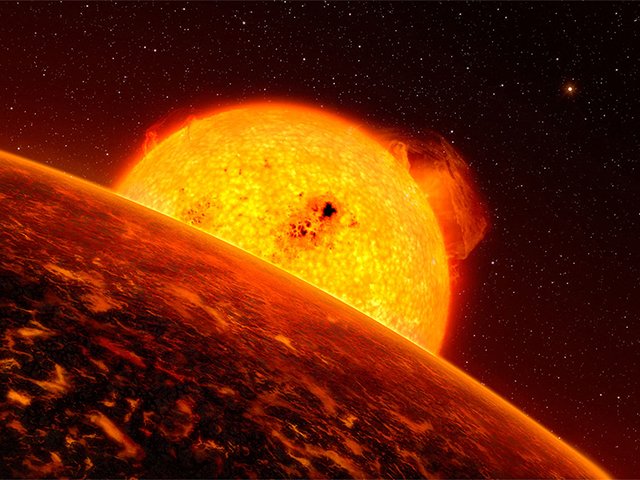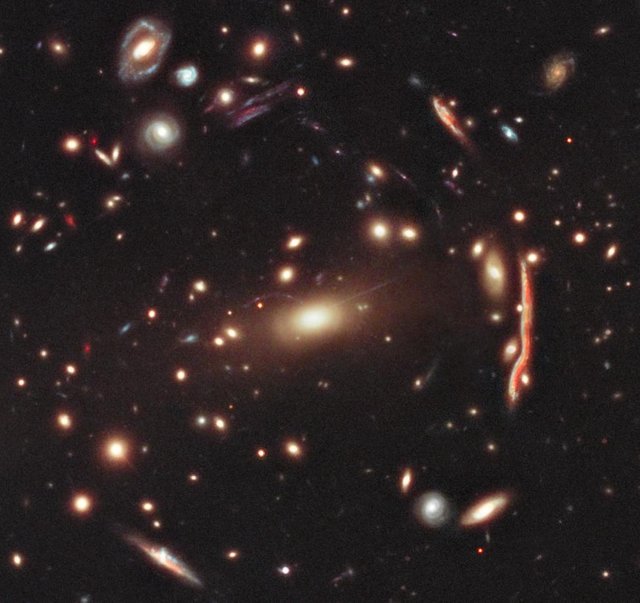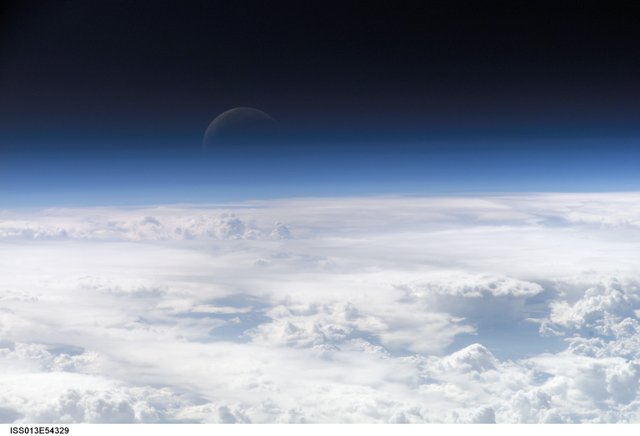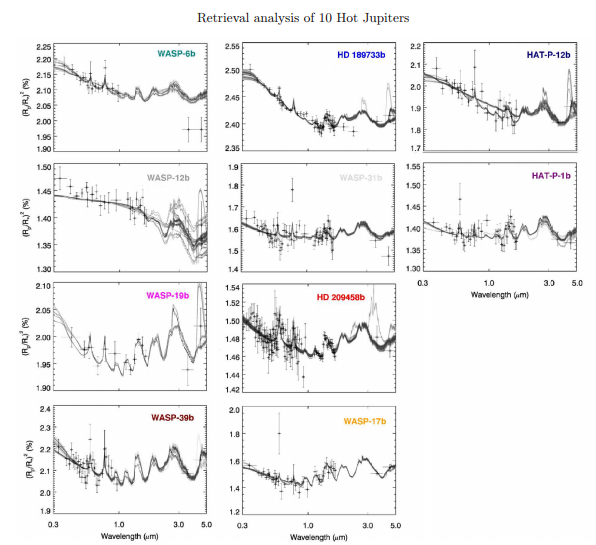The hot Jupiters of other stars -part one- naming and composition
A hot Jupiter is a gas giant exoplanet that orbits close to its star and becomes extremely hot.

(source)
Analyzing the Properties of Planets Outside of Our System
This analysis is important as it can provide clues to help determine the likelihood of life in our galaxy and identify locations where we could someday colonize. Hot Jupiters are the first step in this analysis as they are the easiest to observe. (This is because they are the big and close to their star.) Sadly, since there are simply so many objects in space that coming up with catchy names for all of them is hard. So we are left with beautiful, deep, meaningful, insightful names like: WASP-6b, WASP-12b, WASP-17b, WASP-19b, WASP-31b, WASP-39b, HD 189733b, HD 209458b, HAT-P-1b and HAT-P-12b. Such creativity Dr. Scientist, such creativity.
Naming Conventions
Still names are important, without them we couldn’t distinguish stars. In our own solar system, we named our planets and other celestial bodies after an old and dead religious system because of the guys who found them first. Space is so big that naming everything we can find will amount to a few more names than gods humanity has thought up. So, we name planets after the star. We just take the name of the star and add a letter (starting at b) to the end of the name. They are named in the order of the planets are found. However, before we can name a planet, we must first name the star. In constellations the naming is easy as there are not that many of them. To name a star in a constellation, we take a letter of the Greek alphabet (for example "alpha") for the first part and the constellation as the second part of the name. They are named in the order of brightness, most of the time, but there are some errors. The brightest star in the "Cygnus" constellation (The Swan in English) is Alpha Cygni. Although, eventually when we run out of latin words, we must resort to a number system.
Far away stars not located in constellations are harder to come up with original names for, for these we have resorted purely to a numbering system. We have several naming conventions, which are specified by the 2-3 letters in the front (i.e. HR, BD, SAO, and PPM). While the the second part of the name is usually a set of numbers. They do this in different ways, BD for example, takes in the degree in the sky and the amount found in that degree. HD is one of the more preferable ones as it conveys some information about the star's spectrum within its name. Many companies sell "star names", these are fakes. They are not aligned with the science community and are private businesses that are for profit. A series of numbers denotes the position and for some even the spectrum of a star. That is a lot of information that would be lost with more original names!
(citation)

(source)
Finding Planets is Hard and Complex Work
Many people have devoted their entire lives to finding planets, it is not always easy and once we find them we must study them, which is even harder. One way to study and find out information about all of the planets we identify is to to analyze its spectrum, the light they give off at all wavelengths. The spectrum of a planet gives us information on the composition of atoms or combinations of atoms it came from. From that we can piece together what the atmosphere of a planet is made out of. (This also works for stars and other objects in space as well.) Some devote their lives to finding and some to studying the planets after they were found.
Before we can analyze the planets, we have to find the planets. To do this, we have a couple common methods; both are effective but depend on the planet and it's orbit:
First, we can watch a star and hope a planet or something will cross its path. When it does we can detect the amount the star dims and for how long. This will tell us see how big/far away the planet is from its star. More effort is needed to get specifics though. This method is effective when surveying large amounts of stars over a short period of time, and it has found 306 for us so far.
Second, we can watch the spectrum of stars closely. If a planet is orbiting around it you will see a shift depending on the size and orbit of the planet. This has netted us a nice 536 planets. If we are lucky, when we take a picture of a star we might see one. We have luckily discovered discovered another 39 planets.
Third, we can watch for gravitational lensing from the planets. (Gravitational lensing is when the path of light is bent because of gravity.) This method has only found 18 planets. The last method is to watch a star and if an orbiting planet is big and close enough, we can actually see the star itself "wobble" back and forth, instead of just a change in spectrum. This last method has found a whole two planets. Once the planets have been found, learning more about them becomes top priority for many.
(citation)

(source)
Understanding The Atmosphere is Partly Guesswork
To get the make-up of a planet’s atmosphere, scientists take the spectrum of the planet and run it through a computer. Each atmosphere is of course, quite complex, because each is filled with many different atoms. The observed spectrum changes constantly and running one through a computer determines what the atmospheres are mostly made of. However things get complicated because we don't know many other parameters about the planets we are trying to interpret like the temperature, pressure....or really much of anything else.
Since the planet is so far away we can not get extremely accurate estimates like in our own solar system. When we estimate the composition atmosphere, we pretend it is "one slab" instead of a real atmosphere with multiple layers (like ours for example). We get the light in one bunch, it doesn't sort itself out for us to see layer by layer. We can calculate the heat of the "slab" by estimating the amount of heat coming from the star that hits the planet and the amount of light the planet radiates. Clouds make things even more tricky, so we just try different basic cloud models we have for atmospheres and hope one is close enough to what we observe on the planet. The spectrum changes based on the cloud height and composition (i.e. the higher up they are the more "muted" infra-red light becomes). In our own solar system we can clearly see a large amount of the planet, which makes it far easier. Studying types of planets that we don't find in our solar system can show many things we never knew before.
Since the instruments can only see visible light well, they ignore most cloud types and focus on water, CH4 and CO. It is the most likely of the cloud types with a wavelength over 2 µm. They tried to use the Infrared Array Camera (IRAC) AKA Spitzer.
However, this was deemed to be too inaccurate due to the inability to determine the upper limit of the amounts of other chemicals. Presence of these chemicals would add variables to the cloud models that they couldn't know for sure. Clouds are another interesting thing about the planets. Clouds depend heavily on the gases in the planets. The composition of clouds is important to determining what the planet is like.
This is a set of graphs for the spectrum of each planet at a small set of wavelengths. The X axis is the wavelength while the Y is the amount of the light. You can see they follow a same general trend overall. HD 209458b has the lowest amount of water, while Wasp 17b has the highest. They were unable to find the amount in WASP 12b, as no amount is visible within the spectrum and it may be because the clouds are very deep as the model predicted. WASP-6b and WASP-39b had no accurate predictions as the data was taken with only one of the telescopes. The planets are far away and spectrums are not always clear cut, and in fact rarely are.
Cloud composition
WASP 31b, WASP 6b, and HAT P 1b most likely have clouds only made of water. Sadly, WASP 12b again was an anomaly and they were unable to find out much, they could not rule any model out and the planet could have many different gases. WASP 17b has water and also may have CO (Carbon monoxide), although that is also not certain. HD 209458b fits any of the models, except those which include CO2. HD 189733b, WASP-19b, WASP 39b, and HAT P 12b all fit any model which lacks CH4.
Clouds on the planets can be made out of CH4, H20, and CO. CO has a small effect on the spectrum and any with water could have it. In fact, most of them likely have it. The same goes for CH4 to a lesser extent. The pressure of the atmosphere and other parts of its composition are more complicated and would require another post to fully go through.
Scientific paper
[1]
Barstow JK, Aigrain S, Irwin PGJ, Sing DK. A CONSISTENT RETRIEVAL ANALYSIS OF 10 HOT JUPITERS OBSERVED IN TRANSMISSION. ARXIV. https://arxiv.org/pdf/1610.01841v1.pdf . Accessed October 11, 2016.

Excellent research and post! I really enjoyed the read. It's a pretty big sky and those discoveries seem like small miracles, don't they?
Hey man, just wanted to let you know that your last link lead me to a page that said it is invalid. Otherwise a very good and interesting post.
Oh yeah your right. It worked just before I posted thats weird
EDIT: Fixed it arxiv moved around some urls it looks like, I found it again though, thanks for telling me!
This post has been linked to from another place on Steem.
From nine, to eight, to the Number Nine again - How we found a new planet by @renzoarg
@anarchyhasnogods Here is Your Name in Lights by @justtryme90
Learn more about linkback bot v0.4. Upvote if you want the bot to continue posting linkbacks for your posts. Flag if otherwise.
Built by @ontofractal